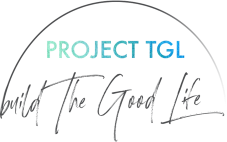I often get asked whether it’s better to use a paper to-do list or a digital to-do list. But what if I told you that’s the wrong question?
Paper and digital systems aren’t adversaries. They’re collaborators.
A very limited number of people only use digital systems (if, for example, they never bother writing things down themselves but instead ask Google Home or Alexa or Siri to remember things for them). And a very limited number of people only use paper systems (if, for example, they don’t own a smartphone or a computer).
As for the rest of us…
But most of us? Most of us integrate both of these systems into our lives with ease. You may write a paper to-do list, but set a daily alarm on your phone to remind you to take your meds. You may schedule everything into Google calendar, but carry around a notebook and pen to jot down any brilliant ideas you have while out and about.
Most of us don’t need to decide between paper and digital systems. Most of us need to decide how we, personally, want to integrate the two.
Physically writing things out has many benefits:
- You mentally process things more thoroughly when you write them down
- The act of writing re-affirms your resolve, making you feel more committed to the things you write down
- Whatever you write down will stick in your memory for longer
This makes paper great for:
- Setting intentions for the day, week, month, or year
- Goal-setting and prioritising
- Getting confusing or messy thoughts out of your head
- To-do lists, on days when you want to stick to your best intentions
Digital systems, on the other hand, save you the effort of manually re-writing repetitive tasks, are easier to share with your workplace or household teammates, and are easier to adjust (through drag-and-drop) when your plans suddenly change.
This makes digital systems great for:
- Recurring tasks
- Shared calendars
- To-do lists, on days when you want to remain flexible as new information comes in
I currently use Asana to track my engagements and individual tasks on a day-to-day basis. This is what I work off every single day to help me get things done, to help me move from task to task. But effectively using Asana is made possible through the foundation of multiple paper systems:
- Journals for writing down more complex thinking about how I want to prioritise and structure my life
- An Agendio paper planner, which I use every Sunday to plan out one main priority for each day of the coming week
- Cheap notepads and pens everywhere, to allow me to quickly jot down random thoughts about things I need to do
(Note: I used to buy nice notebooks, and then I never actually wrote things down in them because I didn’t want to besmirch their pages with thoughts like “buy yoghurt”. So now it’s cheap notepads with tear-off pages)
Full disclosure: If you use the above link to purchase an Agendio planner, I’ll get a discount on my next purchase from Agendio.




